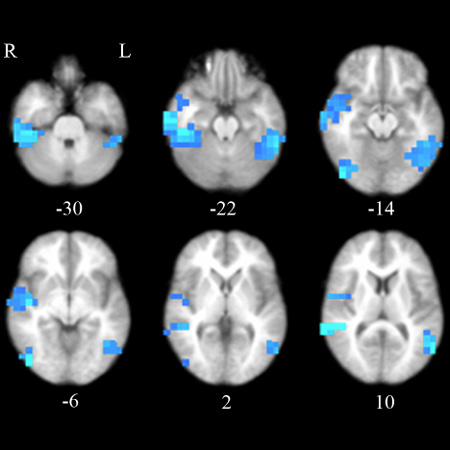Home / Stories /
 by Sara Jane Webb
by Sara Jane Webb
October 6, 2022
Most large-scale randomized controlled pharmaceutical clinical trials for children with neurodevelopmental disorders have failed in the past decade. A randomized clinical trial is a research study that examines the effectiveness of an intervention; half the participants receive the treatment and the other half receive a placebo. The outcome measurement is frequently behavioral change. One reason clinical trials may fail is because of a strong response to the placebo.
Why does this occur in clinical trials with children with neurodevelopmental disorders? Measurements of behavioral improvements are subjective, and both clinician-scientists and parents may report better behavioral outcomes than are warranted because of their hopes for study success.
How can we measure outcomes in a less biased way to find out if an intervention is working? One suggestion is to include safe, non-invasive measurements called biomarkers. Biomarkers are defined as “an objectively measured biologic characteristic that occurs in response to an intervention.” Examples of biomarkers include blood pressure to brain responses. In the National Institute of Mental Health sponsored Autism Biomarker’s Consortium for Clinical Trials, we have focused on two biomarker methods to improve clinical trials for children with autism spectrum disorders (McPartland et al., 2020): scalp recorded electroencephalography (EEG), which is a non-invasive method of measuring brain activity, and Eye Tracking, which is a non-invasive method of measuring the direction of attention, or where someone is looking.
Both EEG and Eye Tracking address several of the current concerns about measurements used in clinical trials. First, both methods are less subject to reporter bias and expectations of improvement. Second, EEG and Eye Tracking data can be collected at low cost compared to other neuroimaging methods. The main expense is buying the equipment, with only small per-subject costs once the system is running. Third, EEG and Eye Tracking can be used across the lifespan and have been used with success in those with low to high support needs, although children do need to sit still for a few minutes, watching images or movies or listen to sounds or sentences for it to be successful. EEG and Eye Tracking systems can be installed in open environments and experiments can be designed to have frequent break periods.
The Autism Biomarker’s Consortium for Clinical Trials is currently conducting a confirmation study at the University of Washington, Boston Children’s Hospital, Children’s Hospital of LA, Duke University, and Yale University Child Studies Center. This builds on our first study with 399 children and now adds a new group of 400 children aged 6 to 11.5 years. This large study will help confirm whether social-attention biomarkers can be used reliably and are scalable for clinical trials and can identify a subgroup of children who might have altered responses. We think biomarkers will be used as an additional measurement in trials – paired with behavior measures to help us understand which children are “responders” and how that response can lead to meaningful changes in a child’s behaviors and opportunities.


